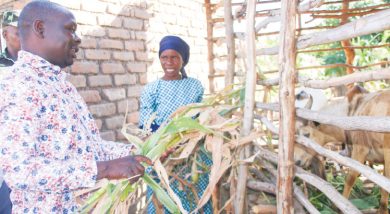Cornered by meat ban
In Neno, precisely at Lisungwi Trading Centre about seven kilometres from Zalewa Roadblock, butchery business has ground to a halt.
The vendors are now just loitering at the market, as if they were beggars. This follows a ban on sell of livestock, meat and meat products by Ministry of Agriculture, Irrigation and Water Development following a foot and mouth disease outbreak in the district.
During our visit to the selling points, we found some sitting idle at their selling points while others cracked jokes or played games such as bawo.

Francis Dambo, 38, is chairperson of the meat vendors at the market. He says the ban is haunting them.
“We are helpless and most options are not viable. The challenge is that the ban will stay until around September and you can’t keep money this long,” he says.
The market has seven meat sellers. They are all married with children. Others like Dambo also support orphans.
“This is the only business which supports my family. I started selling meat in 2005. Now with the ban, I am affected and I don’t see an alternative business,” he laments.
On average, the meat sellers say they make around K10 000 a day.
At Kam’mwamba Trading Centre in the district, only ashes lie on empty fire hearths, a testimony that there is no more selling of kanyenya. We found the vendors just wandering about, hoping for the ban to be lifted soon.
“I make K5 000 a day and I’m able to buy basic needs, but now, I can’t afford even soap. My household is struggling,” says one vendor, Joseph Phombeya.
The ban has also affected restaurant operators. Most people preferred meals served with beef or goat meat. They said these meals were affordable as compared to meals served with chicken.
“As such, most people no longer patronise restaurants,” says Joyce Latiyele who owns a restuarant at Lisungwi.
The 46 year-old woman explains that the absence of beef and goat meat has made some of her customers shun the eatery.
“Many customers prefer nsima or rice served with beef or goat meat to nsima or rice served with chicken here. Now even chickens have become very expensive,” says Latiyele.
A chicken now costs K6 000 from K4 000. Before the ban, a meal with chicken was selling at K700, but now it goes at K1 000. Nsima with goat meat or beef used to sell at K500.
Before the ban Latiyele used to make K9 000 everyday, but now says she makes K2 000. She adds that nsima served with chicken is selling poorly as it is deemed expensive.
The implication of the ban in Neno has spread to Zalewa Roadblock. Meat sellers there buy goats from Neno.
The popular small market along the M1 Road is a hive of business activity and a stop-over for those who love roasted meat and chips. However, since the issue of the ban, the story is different and the situation is likely to remain the same for the next three months.
Erick James, one of the meat sellers at Zalewa says his family is already suffering. For 20 years, his family has survived on meat sales.
“This is the only business that I know and can sustain. How will I feed my family now?” he wonders.
His fears are founded. Fellow meat sellers who have attempted other businesses lament that they are registering huge losses.
“The losses are a result of not being used to other businesses. We don’t have the knowledge. Secondly, our capital is too small to afford other types of businesses,” explains James.
Among other businesses, the vendors have tried rice and sugarcane selling. They buy rice at Nkando Market in Mulanje and sugarcane and maize from Neno and Ntcheu respectively, but they say returns have been discouraging.
“We are now just staying and spending our capital. It will be hard to revive our business after the ban, that’s my fear,” says James.
Ministry of Agriculture, Irrigation and Water Development livestock development director Patrick Chikungwa says the meat ban is one of the conventional measures to ensure that transmission of the virus is stopped.
“The ban will be lifted upon scientific evidence of no more circulation of the virus in the affected areas is recorded. This takes up to three months after the detection of the last reported case in the area,” he explains.





